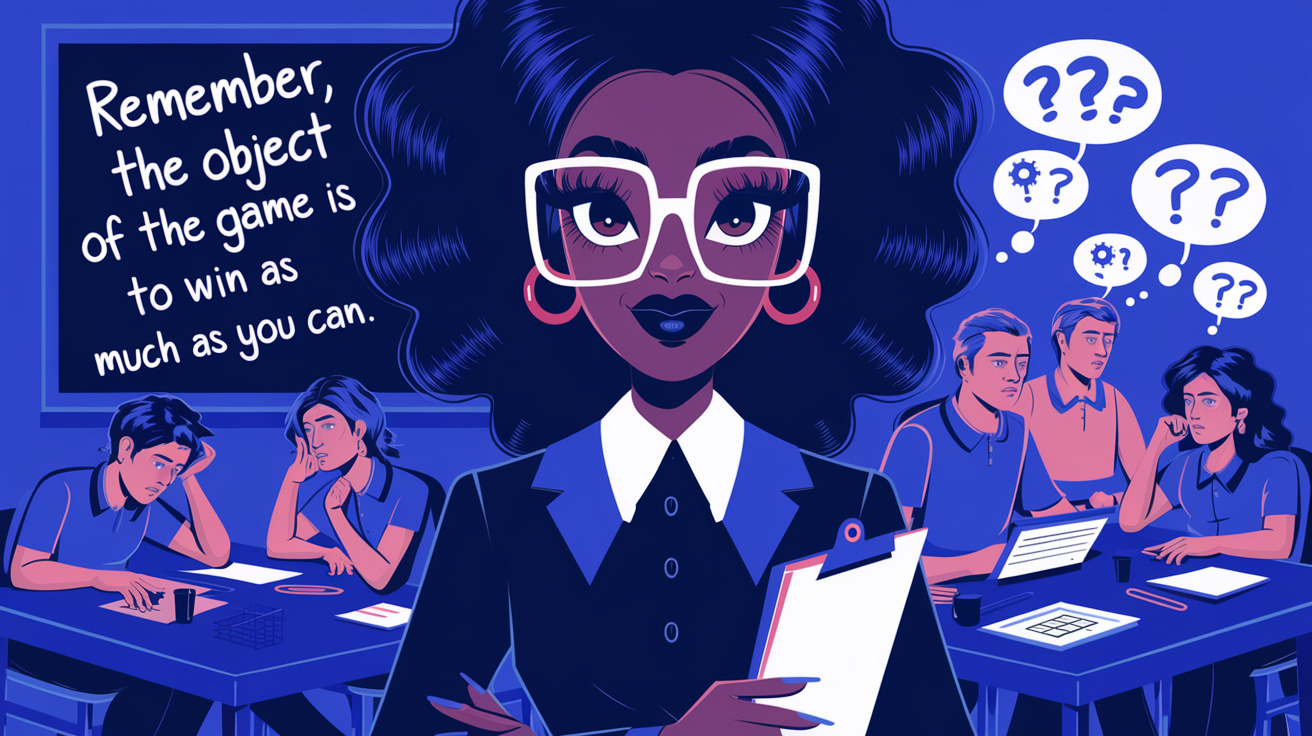80% of your audience decides if your content is worth it in one sentence - here’s how to nail it.
“Remember, the object of the game is to win as much as you can.”
The facilitator said it again, her voice cutting through the air like nails on chalkboard.
It was the third time she’d repeated it.
My teammate rolled his eyes, whispering, “Yeah, we got it the first time.”
But we didn’t get it. Not really.
Our team was stuck. The worksheet in front of us didn’t match the tools in the box, and no matter how hard we tried, nothing was coming together. We were frustrated, confused, and running out of time.
Every time the facilitator walked through the door, she said the same thing:
“Remember, the object of the game is to win as much as you can.”
No clarification. No hints. Just the same line over and over again.
It wasn’t helpful - it was maddening. 😩
At one point, someone shouted, “What does that even mean?!”
But she just smirked, and left the room like she did every other time.
The phrase hung in the air like an itch we couldn’t scratch. We analyzed it, dissected it, argued over it. What did she mean by “win”? Was there a trick to this? Were we missing something obvious?
Time ran out before we found the answer.
When we all gathered in the main room, the facilitators finally explained: the tools in our box weren’t meant to solve our worksheet. They were meant to solve the other team’s worksheet.
And that’s when it hit me: the repeated phrase wasn’t meant to give us the answer. It was meant to make us care about finding it.
By repeating it over and over, the facilitator planted it in our minds. It was a mental loop we couldn’t break out of. Each time she said it, it pulled us deeper into figuring out what it meant.
Without it, we may have given up the moment we realized the worksheet and the box didn’t match. But the open loop the phrase created made it so we had to keep going to figure out how to close the loop.
Did you know that 80% of your audience decides whether or not to continue engaging with your content based on the first line?
The key to great storytelling, and in effect, great content, is creating a loop your audience can’t break out of.
It starts with that first phrase, question, or idea that creates an open loop in their mind. Repeating it strategically pulls them deeper into the story, raising curiosity and tension with each iteration.
But the real power of a loop is in how you eventually resolve it. When the repetition pays off, it creates a moment of clarity that makes your story - and ultimately your content and key message - unforgettable.
Here’s how to use my L.O.O.P. Framework to leverage the power of repetition to build intrigue, maintain attention, and reinforce key ideas in your content:
L - Lead With Repetition
• Introduce a phrase, question, or detail that repeats throughout your story to anchor attention.
O - Open the Question
• Use the repetition to build tension and curiosity. What does this phrase mean? Why does it matter?
O - Offer a Resolution
• Gradually reveal the purpose of the repetition, delivering an insight or answer that satisfies your audience.
P - Pay It Off
• Tie the repeated element to the story’s deeper message, ensuring the payoff resonates emotionally and intellectually.
Why This Works
Repetition isn’t just about emphasis - it’s about engagement.
By repeating a key phrase or idea, you create a loop that keeps your audience drawn in. The phrase becomes a mental anchor, drawing them back into the story every time it appears.
And when the loop resolves, it delivers a moment of clarity that leaves your audience satisfied and more likely to remember your message.
Think about it: the facilitators’ repeated phrase didn’t tell us what to do, but it kept us focused on trying to figure out exactly what it WAS telling us. That’s the power of a loop.
Here’s What You’ll Get Out of It
• Deeper Engagement: Repetition keeps your audience invested in your story.
• Stronger Retention: Loops create mental anchors that make your message stick.
• Memorable Impact: A well-executed payoff leaves a lasting impression.
“The right words, repeated at the right time, don’t just hold attention—they create it.”
Your Turn
Think about your next story, email, or post. Ask yourself:
1. What’s your loop? Choose a phrase or idea you can repeat strategically.
2. How will you build tension? Use the repetition to create curiosity and raise the stakes.
3. How will you resolve it? Deliver a payoff that ties the repeated phrase to your story’s deeper insight.
Remember: repetition isn’t about redundancy - it’s about rhythm. Create a loop that pulls your audience in, keeps them engaged, and leaves them satisfied when you close it for them.



